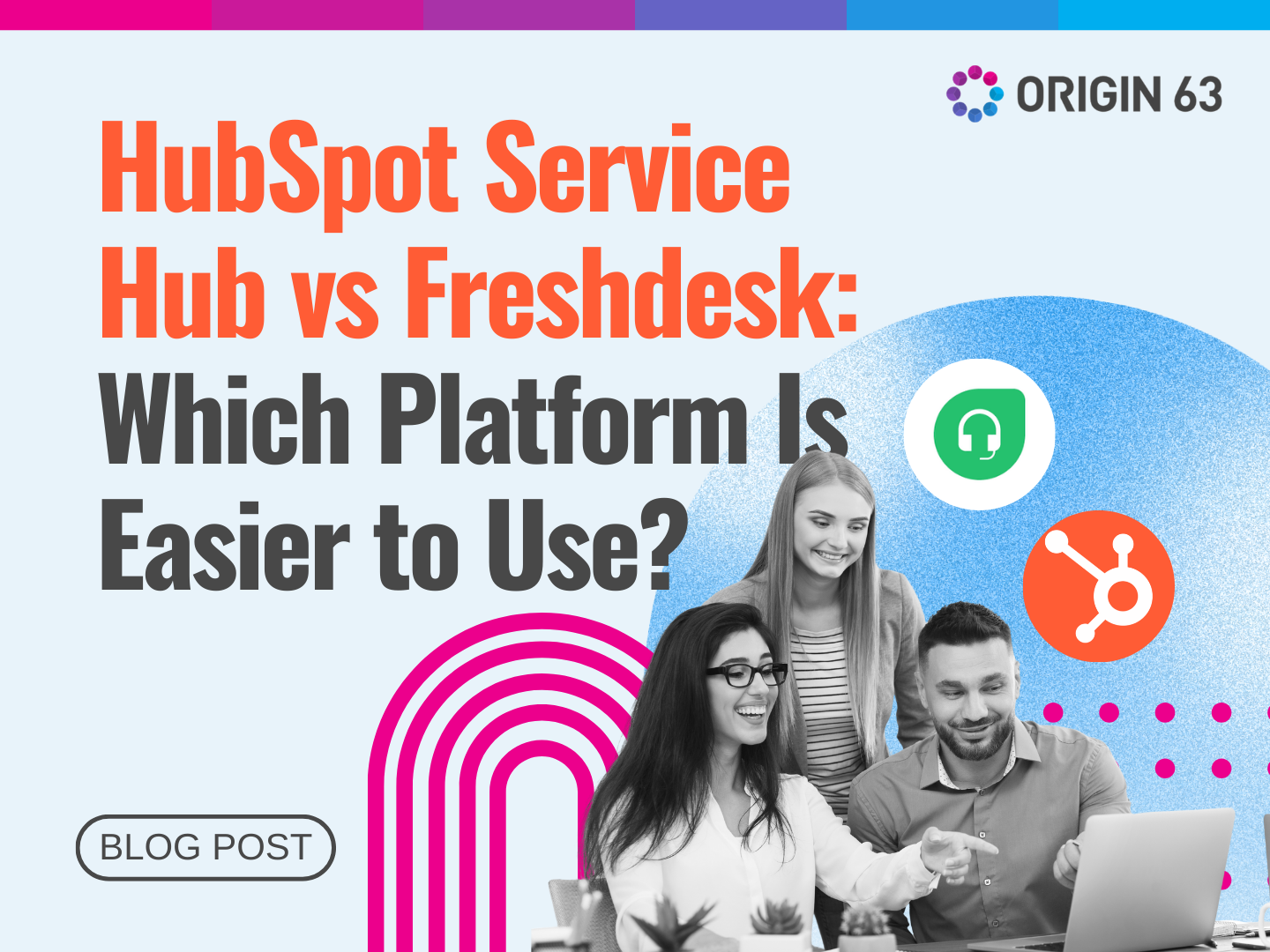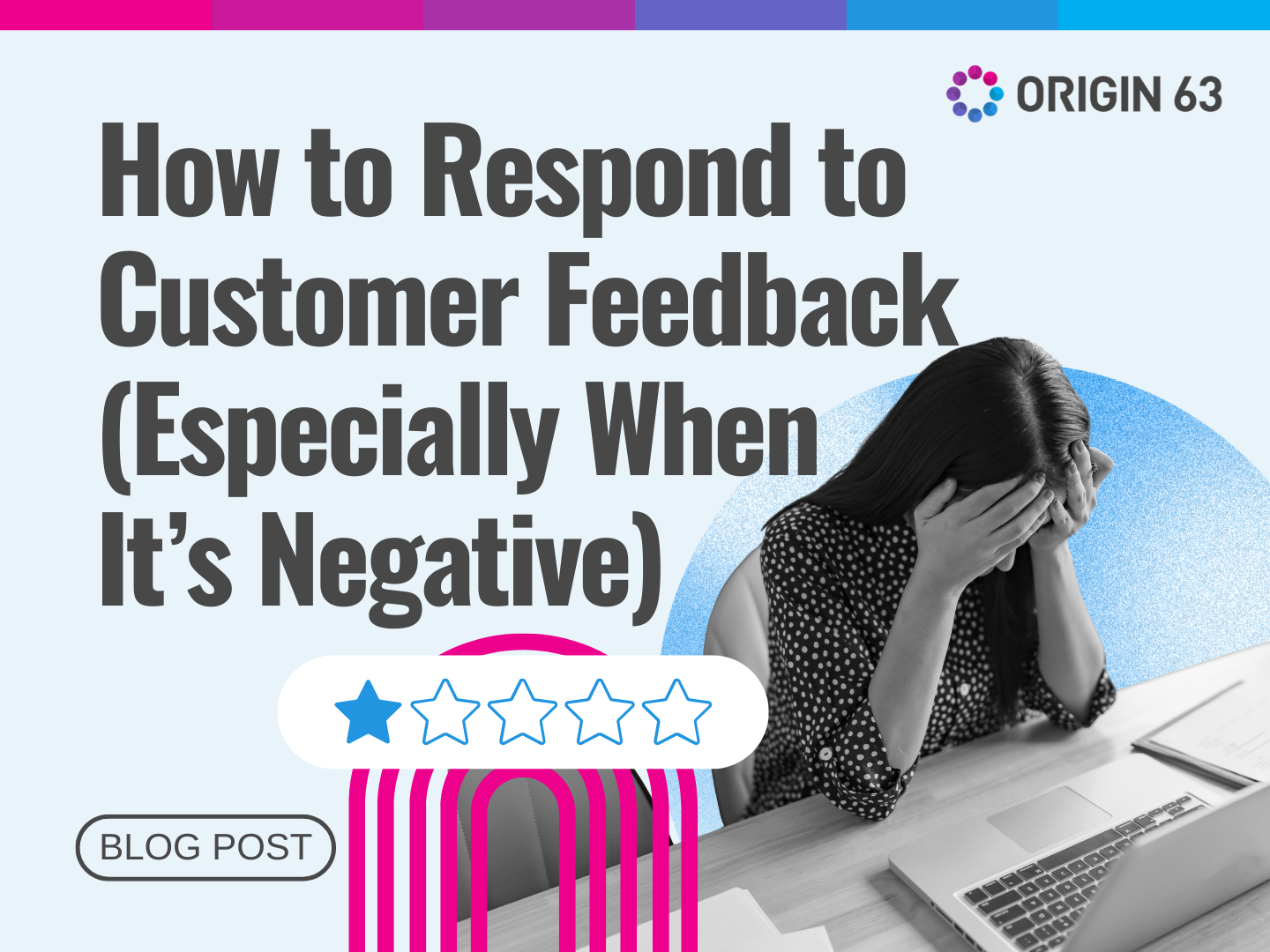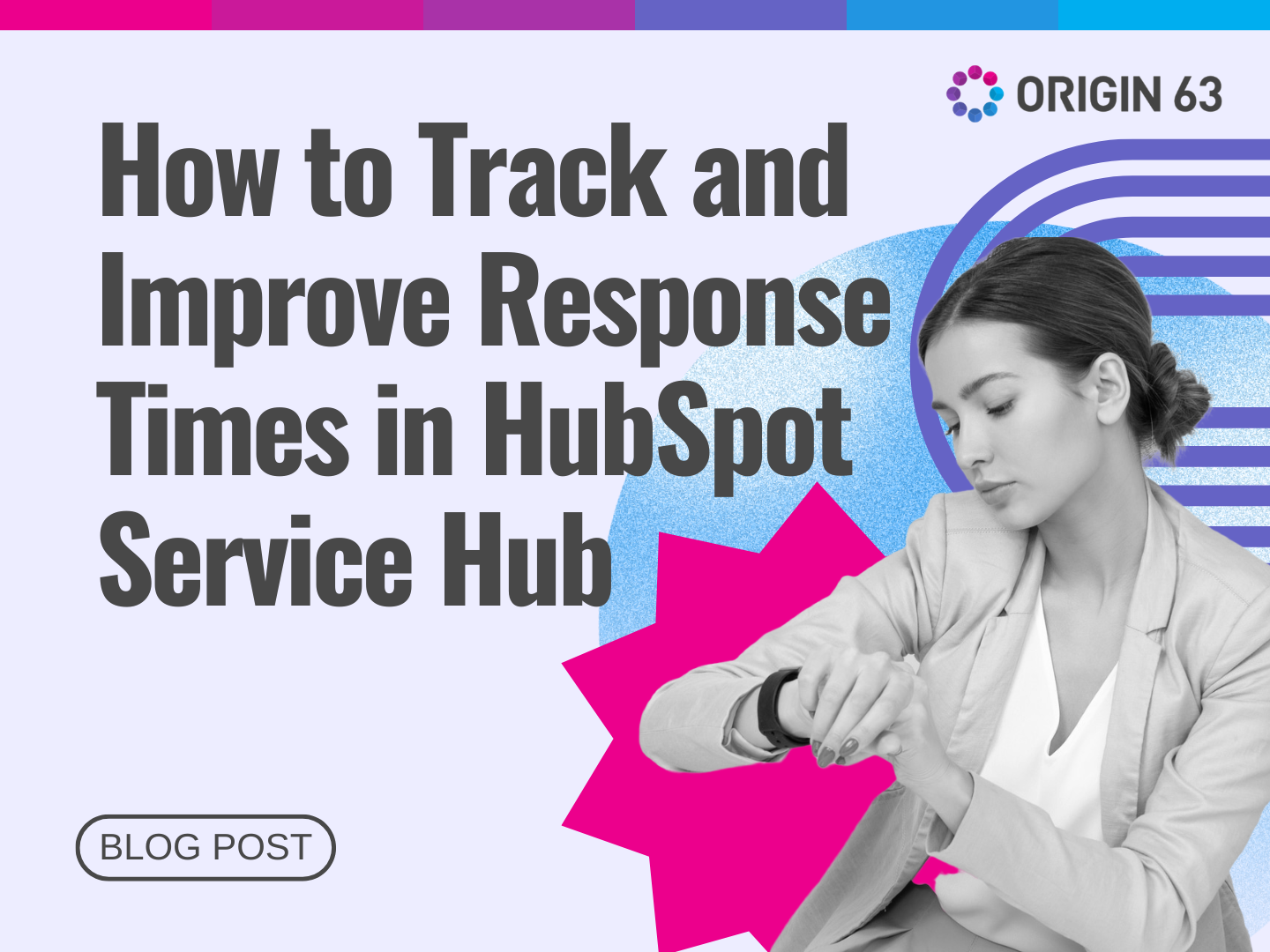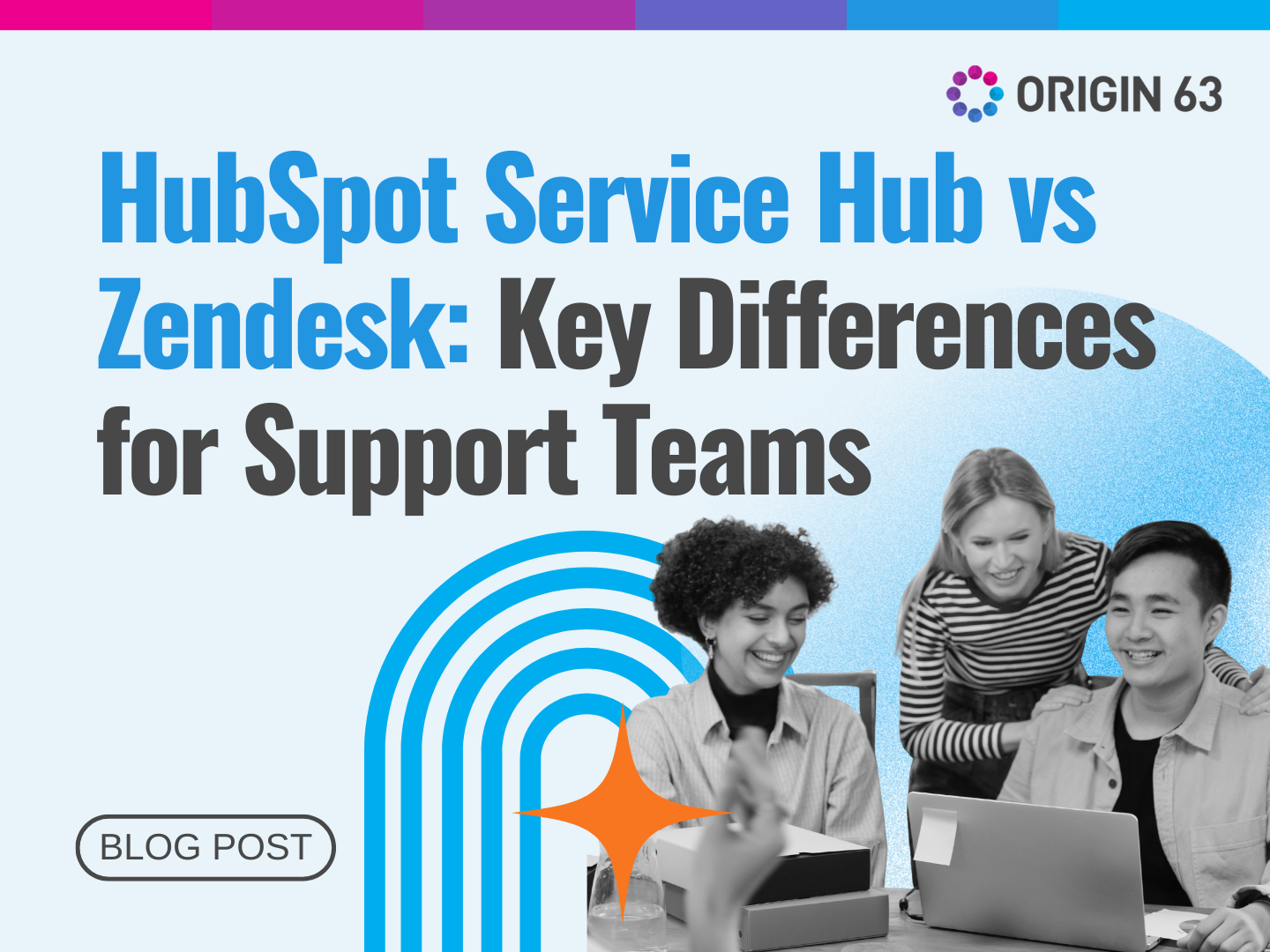Many small businesses start with spreadsheets to track customers. That works for a while, but as you grow, things get messy. Emails get lost, follow-ups are forgotten, and customers get frustrated.
HubSpot Service Hub is built to fix that. It gives you one place to track requests, answer questions, and keep customer info connected to your CRM. Instead of jumping between tools, your team can stay organized and respond faster.
In this guide, we’ll explain what Service Hub is, how it works with HubSpot CRM, the main features it includes, and who should use it. By the end, you’ll see why it’s a smart next step if you want to move past spreadsheets and keep your customers happy.
What Is HubSpot Service Hub Used For?

At its core, HubSpot Service Hub is built to help you manage customer service in one place. Instead of letting emails, chats, and calls pile up in different tools, you can organize them with tickets so nothing slips through the cracks.
You want to solve issues before they turn into bigger problems. 69% of customers say they’re likely to switch brands if they get poor service. With Service Hub, every request is logged and visible, so your team can give customers the attention they expect.
Service Hub also helps you see the bigger picture. Over time, you can spot patterns in requests, learn what slows your team down, and find ways to fix those bottlenecks. The result is faster responses for customers and less stress for your support team.
Is HubSpot Service Hub the Same as CRM?
It’s easy to confuse Service Hub with a CRM since both deal with customer information. But they’re not the same. The CRM is like your main database. It stores details about your contacts, companies, and past interactions.
Service Hub works on top of the CRM by adding customer support tools. While the CRM tells you who the customer is, Service Hub helps you manage what they need right now. Together, they give you both the history and the tools to act.
This combination is important because 90% of mid-sized businesses already use a CRM system.
Having Service Hub connected to HubSpot CRM means your team isn’t working from two separate systems. Instead, every rep has the full picture, which makes support smoother and more personal.
What Features Are Included in Service Hub?
HubSpot Service Hub comes with tools that make customer support easier, faster, and more connected. Since 74% of businesses say having a consolidated view of customer info helps create great experiences, each of these features ties directly into the HubSpot CRM.
Ticketing to Organize and Track Issues

If you’ve ever had customer emails get buried in an inbox, you know how easy it is for requests to slip through the cracks.
Ticketing solves this by turning each request into a trackable ticket. You can assign tickets to specific team members, mark them with a priority, and follow them from “open” to “closed.”
Here’s how you might use it: if a customer emails about a billing error, you create a ticket and assign it to the finance support rep.
You can track that ticket until the issue is resolved, and the whole team can see the status along the way. With tickets, you never lose sight of customer problems.
Automation to Save Time on Repetitive Work
Support teams often spend hours on tasks like routing requests or sending follow-up messages. Service Hub lets you automate these tasks so you can focus on helping customers.
For example, you could set up automation that:
- Routes all “billing” tickets to the finance team.
- Sends an automatic email to customers letting them know their ticket has been received.
- Creates reminders if a ticket has been open for more than three days.
You don’t have to micromanage every step. It keeps your process moving smoothly in the background while you spend your time solving the actual issues.
Knowledge Base for Customer Self-Service
Customers don’t always want to wait for a response. A knowledge base gives them a way to help themselves. You can build a library of FAQs, step-by-step guides, and troubleshooting articles right inside Service Hub.
Imagine you run an online store. Instead of answering dozens of tickets about “How do I track my order?”, you publish a clear guide in your knowledge base. Customers find their answer in minutes, and your support team has fewer tickets to handle.
Reporting and Analytics to Spot Trends

Service Hub also helps you understand the bigger picture. Reporting tools let you track how your team is doing and how customers feel about the service they’re getting.
For example, you can look at reports to answer questions like:
- What is our average response time for tickets?
- Are we getting more requests about product setup this month than last month?
- How satisfied are customers after working with support?
When you review these insights, you can make changes that improve both team performance and customer satisfaction. If you notice a spike in product setup questions, you could add a new knowledge base article or adjust your onboarding process.
Who Should Use HubSpot Service Hub?
HubSpot Service Hub isn’t just for large companies with big support teams. It’s designed to help businesses of all sizes move past the limits of spreadsheets, sticky notes, or scattered tools. If you want to keep customers happy while growing your business, this is a tool worth considering.
Small Teams Ready to Move Beyond Spreadsheets
If you’re still tracking support requests in Excel or Google Sheets, you’ve probably seen how messy things get as volume grows. Tickets slip through, and customers end up waiting too long.
With Service Hub, even a small team can stay organized because every request is logged automatically. You’ll know who owns each issue and what stage it’s in without digging through rows of data.
Growing Companies That Need Scalable Tools
As your customer base expands, the number of requests you get will naturally increase. Without the right system, your team risks burning out.
Service Hub helps you scale by adding automation, reporting, and self-service tools like a knowledge base. These features let you handle more requests without needing to double your staff.
Any Business Focused on Improving Relationships
Great customer service isn’t optional anymore. People remember how they’re treated, and they often base buying decisions on it. In fact, 84% of customers say they’re likely to recommend a brand if they get great service.
If your goal is to build loyalty, Service Hub gives you the tools to respond faster, personalize interactions, and keep all customer data connected to your CRM.
Examples of Businesses That Benefit

Here are a few more examples of businesses that benefit from using a CRM like HubSpot Service Hub:
- E-commerce shops that want to reduce “Where is my order?” tickets with a knowledge base.
- B2B service providers that need to track ongoing client issues and keep detailed histories.
- Nonprofits that rely on volunteers or small teams need a simple way to organize support.
If your business relies on keeping customers happy (and most do), then Service Hub helps you deliver a smoother, more consistent experience no matter your size.
Why Learning Service Hub Basics Matters
If you’ve outgrown spreadsheets or scattered tools, HubSpot Service Hub gives you a better way forward. It connects customer service to your CRM so your team always has the full story.
You can track requests with tickets, save time with automation, and give customers quick answers through a knowledge base. Reporting shows you what’s working and what needs attention so you can keep improving.
Learning the basics now sets your business up to scale smoothly. Whether you’re a small team or a growing company, Service Hub helps you move beyond messy spreadsheets and deliver the kind of service that makes customers stay.
Get Expert Help With HubSpot Service Hub
Want to make sure you’re getting the most out of HubSpot? At Origin 63, we help businesses set up Service Hub so every feature works for your goals. From ticketing to automation to reporting, we’ll guide you in building a system that saves time and keeps customers happy.
Reach out today to start using HubSpot Service Hub the right way, and turn customer service into a driver of growth.














.png?width=90&height=90&name=Arrows%20Partner%20Badge-test%20(1).png)

